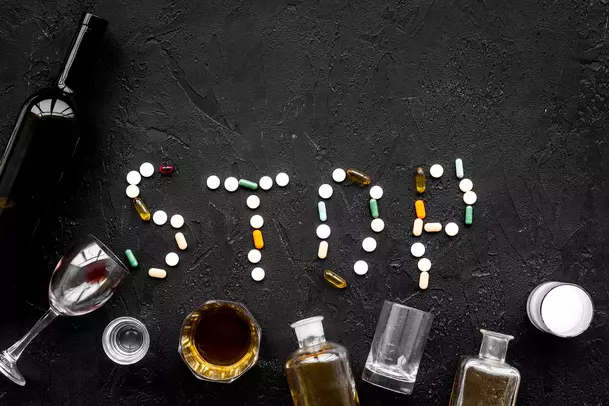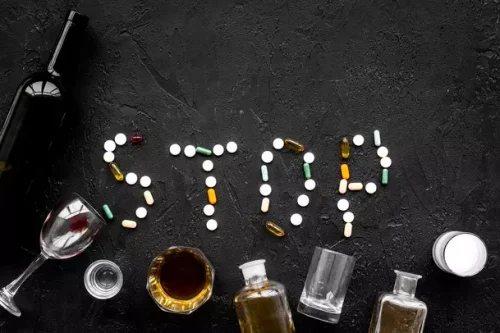Dr. Luzano has a background in working with a multitude of mental health disorders and chemical addictions. He is a graduate of Columbia University, completed medical school at the University of Medicine and Dentistry of New Jersey, and residency at UCLA. Dr. Luzano has extensive experience in therapy that promotes empathy, understanding cognitive-behavioral processes, psychodynamics, and motivation for change. He applies these to complex trauma, PTSD, and other anxiety, depression, and mood disorders.
She is a graduate of the Skidmore College and Hunter College School of Social Work and boasts over 20 years of experience in providing clinical treatment to people of all ages from adolescents to adults. Previously, she operated several private psychotherapy practices in New York and Greenwich, CT. Laura also served as a consultant to the Columbia University’s Mailman School of Public Health and her experience also includes the role of an Adjunct Professor in Marymount Manhattan’s Department of Psychology. John Pustaver, MDiv, MA, completed his undergraduate education at Arizona State University majoring in fine arts. After serving the Archdiocese of Los Angeles for ten years, John found his spiritual path within the 12-Step recovery community and retired from active ministry.
Dr. Sheila Shilati
As an executive, owner, consultant, and investor, she has developed a specific lens for treatment. Dr. Shilati was previously the Chief Operating Officer for Seasons Recovery Centers, LLC., since 2011, and founder of Vantage Point Recovery since 2009. She serves on the board of directors for the Behavioral Health Care Endowment Fund.
She holds a Bachelor of Arts in Psychology and Sociology from Loyola Marymount University and a Master’s Degree in Clinical Psychology, emphasizing trauma treatment, from Antioch University. Dr. Cate Vogl holds both a master’s degree in marriage and family therapy from The University of Southern California and a doctorate in clinical psychology from The Chicago School of Professional Psychology. She was drawn to this work as a deeply feeling individual, seeking a path that allowed her to help others. Kate incorporates cognitive behavioral therapy (CBT), dialectical behavior therapy (DBT), narrative therapy and family systems in her therapeutic practice. In addition to working as a therapist, Kate has been a journalist for nearly 30 years and believes in the power of writing to help clients express themselves and transform their lives.
Meditation, according to Richard, gives clients a taste of reality and helps develop a relationship with the truth. Audrey Hope is a spiritual intuitive healer and addiction treatment expert and brings her finely-tuned perception and healing to her profession. She has worked as the Director of Spiritual Counseling for eight years at a renowned rehab center in Malibu. Audrey is extremely well-known and popular because of her revolutionary techniques that aid clients in personal transformations. He also holds various prestigious titles, including being a Fellow at the American College of Forensic Examiners Institute and a Diplomate of the American Board of Psychology Specialities in Clinical and Forensic Psychology. He is also a member of the American Board of Certification in Homeland Security.
With a dual master’s degree in Clinical Psychology and Depth Psychology, Michael Malone delves deep into the underlying factors that shape human behavior and relationships. Beyond traditional therapy, he extends his expertise to Executive Coaching, focusing on lifestyle optimization for professionals seeking to achieve their full potential through creating lasting, meaningful change. Michael’s tailored approach and dedication to holistic well-being have made him a trusted guide for countless individuals on their path to mental and emotional wellness. Being on the cutting edge of improving addiction treatment has allowed Serenity to attract a professional staff at the top of their game. The Serenity medical, psychiatric and psycho-therapeutic staff are amongst the best in their fields and are well known nationwide by reputation and through media and academic publications. We strive for excellence when it comes to our treatment methods and management styles, so our staff is comprised of the most experienced and advanced addiction recovery professionals.
Spiritual Advisor, RASi
Hard working and driven to a fault helps me help others and in turn helps myself in my daily work and life. Some of these people were victims of natural disasters while others were victims of violence. It was an experience that shapes the heart, and Dr. Shilati has proudly carried that with her on all endeavors.
- Before her doctoral studies, Dr. Towers gained valuable experience as an executive assistant to a renowned clinical/forensic psychiatrist.
- She has worked extensively in Denver while pursuing her Doctorate Degree in Clinical Psychology at the University of Denver’s Graduate School of Professional Psychology.
- She holds certifications from institutions like NASM, including CPT, CES, PES, FSN, FRCms, and Kinstretch, as well as the Institute for Integrative Nutrition.
- He became the director of their Clinical Diagnostic Program after learning the science and art of conducting professional evaluations.
- Dr. Skipper is one of the key members of the National Physician Health Program Blueprint Study and has published several articles on drug testing, physician health, and contingency monitoring.
Tiffany Towers
She specializes in her research on parental bonding and substance abuse and focuses on exploring the connection between attachment and addiction. Dr. Jennifer Tippett is a Licensed Clinical Forensic Psychologist and aims at treating addiction and severe mental health disorders. She has worked extensively in Denver while pursuing her Doctorate Degree in Clinical Psychology at the University of Denver’s Graduate School of Professional Psychology. Dr. Nakanishe utilizes a large variety of therapeutic orientations and techniques during his therapeutic practice. His specialty, however, is in psychodynamic and psychoanalytic approaches and focuses on unconscious motivations that influence human behavior. In 1993 he graduated with distinction from George Washington School of Medicine in Washington DC, after which he completed his residency at UCLA.
- She utilizes her theatrical background and collaborations with nonprofit organizations to fuel the impact of drama therapy techniques on veteran reintegration.
- We strive for excellence when it comes to our treatment methods and management styles, so our staff is comprised of the most experienced and advanced addiction recovery professionals.
- John then completed 60 hours of MFT coursework while working at the Betty Ford Center’s professionals program.
- He has led the Alabama Physician Health Program and has been a part of creating and overseeing the Oregon Health Professionals Program.
She was the Admissions Director at Seasons, Marit sheila shilati and she takes you through the admissions process. She is there to help you from the very beginning – upon arrival, admission, and then through treatment. She ensures that they understand and make use of the unique benefits of the renowned treatment program. This includes guiding you through your initial steps toward recovery, answering any questions that you may have, and helping with insurance and financing options. For those seeking a dual diagnosis program in a luxury setting, Marit assists you in reaching out and briefs you on why their evidence-based approach is the best in class.
For the last 16 years, Dr. Raskin has been specializing in preventive and addiction medicine. He has a full-service office with X-ray, cardiac stress testing equipment, and a lab, and he holds privileges at St. John’s Health Center in Santa Monica, California. Dr. Reuben Vaisman-Tzachar is among the finest and most experienced professionals at Seasons in Malibu. He earned his doctorate in Clinical Psychology in 1993 and has been a licensed psychologist since 1997. Over 25 years, Dr. Rueben taught clinical and forensic psychology at institutions like The Chicago School of Professional Psychology.
Dr. Sepi Kohn
In 1993, he graduated with distinction from George Washington School of Medicine in Washington DC, after which he completed his residency at UCLA. For the last sixteen years, Dr. Raskin has been specializing in preventive and addiction medicine. He has a full-service office with X-rays, cardiac stress testing equipment, and a lab, and he holds privileges at St. John’s Health Center in Santa Monica, California.
He draws from a wide range of therapeutic orientations and techniques but specializes in psychodynamic and psychoanalytic approaches, focusing on exploring the unconscious motivations that drive our behaviors. He has conducted research and published over twenty professional journal articles and has written or co-authored eight books and three psychology-based novels. Additionally, he has served as an expert witness for various courts, including the 9th Circuit Court of Appeals. Jessica Silver is a somatic therapy specialist and certified transformative bodywork practitioner with over fifteen years of experience in private, residential, and intensive outpatient settings. Jessica Bishop is a trauma-informed E-RYT (Experienced Registered Yoga Teacher, Yoga Alliance), meditation teacher, and reiki practitioner.
Her approach to mental health and addiction recovery is rooted in the belief that “the only thing harder than doing it is not doing it.” She aims to be a part of the journey of as many people as possible and assist them in their recovery journey. She uses a mind-focused approach to help clients tap into their deeper souls, where the actual healing occurs. She aims to guide all her clients to complete transformation including physical, emotional, and spiritual aspects. She was then matched to a competitive internship program at New York University- Bellevue Hospital in Manhattan, where she continued to develop competencies in psychological assessment and working with underserved and special populations. Tiffany Towers is a licensed clinical psychologist with a rich academic background.
She addresses mental health concerns from a holistic perspective that encompasses the body, mind, and emotions. Dr. Trager received her doctorate degree from University of Southern California in 1994 and has continued her intensive training and practice in the Los Angeles area. Her infectious optimism, enthusiasm, dedication, and compassion put clients at ease so that they can do the necessary work to heal and thrive. Dr. Sheila Shilati was also able to develop a groundbreaking mental health program in the Kingdom of Swaziland. She understood that the Swazi youth were in need of a program like this, but she also knew that help was scarce. This is the reason why she developed a successful self-sustaining integrative program.
This includes Africa and the Middle East, where she worked directly with victims of natural disasters and HIV/AIDS patients. She was also tasked with developing a pro-active mental health program for youth in Swaziland. With extensive domestic and global experience, Dr. Sheila Shilati is truly a beacon of excellence in this challenging and ever-changing environment.
She feels privileged to continue to work with those seeking help along their journey at Seasons. Dr. Sheila Shilati, Psy.D, is the Chief Operating Officer at Serenity Malibu Rehab. With over 10 years of extensive industry experience, she is committed to excellence in all services. As a seasoned, respected, and reputable physician — Dr. Sheila previously served as an international ambassador for relief expeditions overseas.




